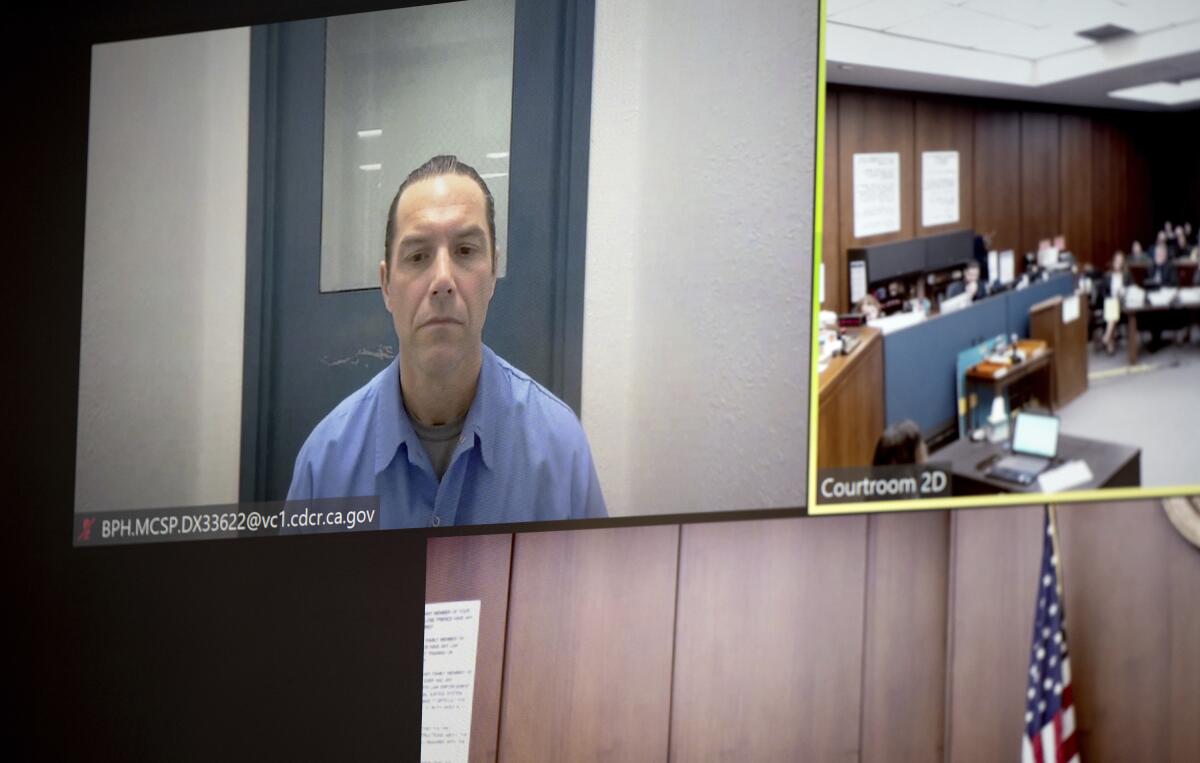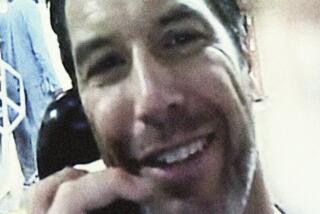Scott Peterson suffers big setback in effort to prove he did not kill wife, unborn son

- Share via
Scott Peterson’s quest to prove his innocence in the notorious killing of his pregnant wife and unborn son has been considerably narrowed.
A judge weighing evidence in a last-ditch bid to exonerate Peterson in the killings ruled this week that one item collected 20 years ago in connection with his murder trial could be retested for DNA.
The Los Angeles Innocence Project, a nonprofit legal group with a reputation for exonerating wrongfully convicted criminals, is seeking to clear Peterson in the killings of Laci Peterson and their unborn son, Conner. Peterson’s new legal team had asked for testing of more than a dozen pieces of evidence they say could point to other suspects in the slaying.
San Mateo County Judge Elizabeth M. Hill granted only one request for DNA testing, on a piece of duct tape found with Peterson’s body, which had been dumped in the San Francisco Bay.
New testing on a key piece of evidence — a mattress recovered from a burned-out van used in a burglary near the Petersons’ Modesto home — was not granted.
The duct tape that will be examined is about 15 inches long and was stuck on the right thigh of Laci Peterson’s pants. It was tested in 2013, but Hill ruled that technological advances for even smaller pieces of DNA may yield previously unobtainable results.
According to Peterson’s lawyers, “a section of the duct tape that was folded over onto itself underwent DNA testing and the presence of human DNA was found, but no DNA profile could be obtained.”
Peterson listened to the hearing from Mull Creek State Prison. Now 51, he was convicted in 2004 and initially sentenced to death in the murders, but that sentence was overturned and he is now serving life without parole.
The LA Innocence Project is backing Scott Peterson’s effort to exonerate the convicted killer who faces life in prison for the killing of his pregnant wife, Laci.
Laci Peterson vanished on Christmas Eve 2002 from their Modesto home. She was eight months pregnant at the time with the couple’s first child.
In April 2003, her body and that of the baby — his umbilical cord still attached — washed up on a rocky shore in San Francisco Bay. A woman walking her dog had found the remains a few miles from where Scott Peterson had told police he had been fishing when his wife disappeared. Four days later, Peterson was arrested for murder.
Coverage of the case against Scott Peterson in the murder of his wife, Laci Peterson.
Key to the Innocence Project’s efforts in retesting evidence in the Peterson case is a stolen van that was set on fire on Dec. 25, 2002, in Modesto, a day after a burglary near the Petersons’ residence. Inside the van was a mattress with what one investigator said appeared to be bloodstains.
The Innocence Project alleges that it has evidence from the owner of the van — which was found a mile from the Petersons’ home — showing it did not have a mattress inside before it was stolen.
Prosecutor David Harris said Peterson’s team was seeking a “do-over” and that it was not fair to the victim’s family, who have been traumatized. He argued that testing showed no blood on the mattress and the defense lacked any “actual evidence.”
On Wednesday, Hill agreed with prosecutors in denying testing of the mattress and 12 other items submitted by the Innocence Project. The judge ruled that the mattress did not show signs of blood when it was tested in 2019. She also rejected testing for a hammer and a work glove recovered from a burglary near the Peterson home, as well as the contents of a Target bag found near Laci Peterson’s body and a black tarp.
Paula Mitchell, executive director of the Innocence Project, told the judge that Peterson’s 2004 conviction was based entirely on circumstantial evidence — with no murder weapon, no witnesses and no determination of the cause, time or date of death.
She argued that new technology could yield DNA evidence, calling the testing “a no-brainer in this case.”
Hill has scheduled a hearing for July to determine exactly how the DNA examination will be carried out on the duct tape.












